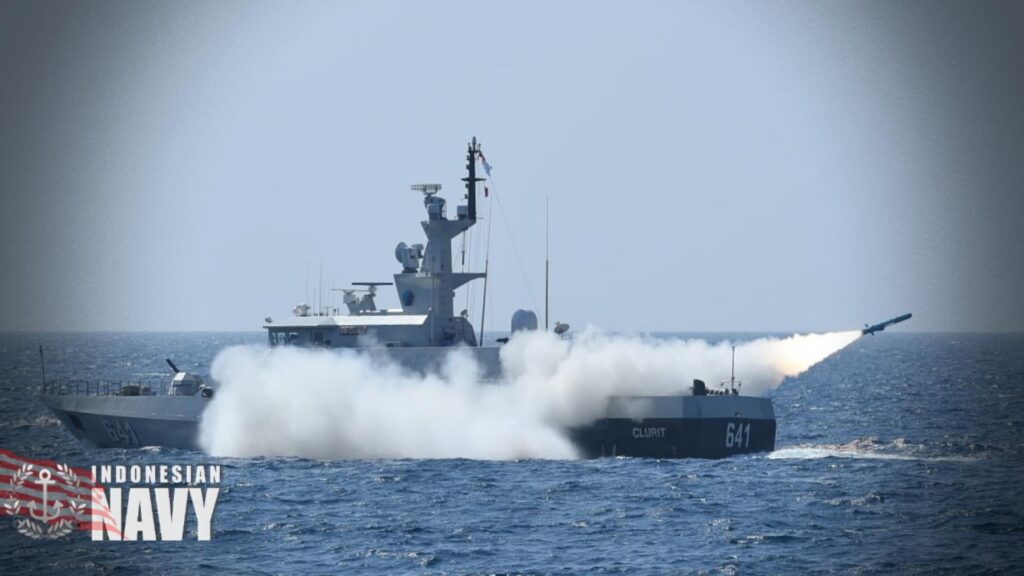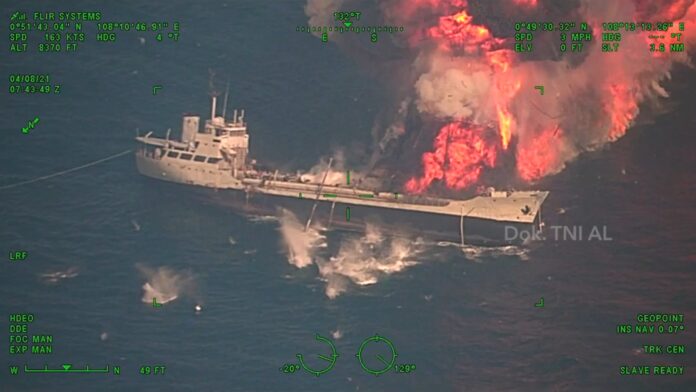Two Clurit-class (KCR-40-class) fast attacking crafts of the Indonesian Navy, KRI Clurit (641) and KRI Kujang (642) successfully fired two Chinese-oriented C-705 anti-ship missiles during the SINKEX within the scope of Pra Armada Jaya exercise in Natuna Sea, the Indonesian Navy (TNIAL) announced. The former oiler KRI Balikpapan (901) pretended as target and sank after the missiles hit.
The two missiles were fired from a range of ±70km. The Sinking Exercice (SINKEX) was part of the initial preparation ahead of the Armada Jaya Exercise, which is the main training exercise of the Indonesian Navy.
The Indonesian Navy assets deployed to the Java Sea, North Natuna Sea and Dabo Singkep, Riau Islands for the exercise which has been conducted between 5-15 April.
Pra Armada Jaya exercise is the most critical naval training of the Indonesian navy aims to test and improve the professionalism of the Indonesian Navy crew and the combat readiness of the Indonesian Navy’s assets. The exercise scenario contains joint naval operations, amphibious assault and coastal defence training.

Clurit-class FAC:
The Clurit-class fast attack crafts are a class of indigenously designed and built warships operated by the Indonesian Navy. Vessels of this class are named after indigenous weapons and swords used in Indonesia.
The Clurit prioritizes the element of surprise, rapid strike, destroying multiple targets at once and avoidance. She has a crew of 35.
The first four of the class were originally armed with just a Denel (Vektor) 20mm cannon and two 12.7 mm machine guns. In May 2014 the first two vessels, Clurit and Kujang, were fitted with a Chinese made six-barrelled NG-18 30mm CIWS and two of the new C-705 SSM. Indonesia hopes to licence-build the C-705, which is a derivative of the Chinese C-704 anti-shipping missile with a turbojet to extend the range to 120 kilometres (65 nautical miles).



